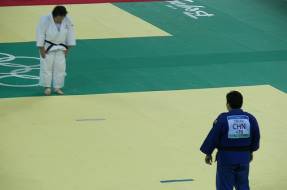Eu apoio métodos duros de treinamento; não apoio é espancar os atletas...The IJF Condemns Hard Training Methods | 31th January 2013. |
In direct connection with the complaint of a group of athletes from the national Japanese women's team, reporting the acts from their coach, the IJF strongly emphasizes its total disapproval of such behaviors.
 "It has nothing to do with the spirit and philosophy of judo taught by the founding master of our sport, Master Jigoro Kano," said the President of the International Judo Federation, Mr. Marius Vizer.
"It has nothing to do with the spirit and philosophy of judo taught by the founding master of our sport, Master Jigoro Kano," said the President of the International Judo Federation, Mr. Marius Vizer.
 "It has nothing to do with the spirit and philosophy of judo taught by the founding master of our sport, Master Jigoro Kano," said the President of the International Judo Federation, Mr. Marius Vizer.
"It has nothing to do with the spirit and philosophy of judo taught by the founding master of our sport, Master Jigoro Kano," said the President of the International Judo Federation, Mr. Marius Vizer.
The IJF is particularly focussed on the development and promotion of the moral code of judo. Judo is a method to develop the physical and mental capacities, whose primary concern is to maintain the health and integrity (physical and mental) of the participants. Any action that goes against these principles are banned. The IJF will therefore take all necessary measures.
_______________
La FIJ désapprouve les méthodes durs d'Entraînement
En lien direct avec la plainte portée par un groupe d'athlètes de la sélection nationale japonaise féminine, concernant les agissements de la part de leur coach, la FIJ tient à fortement souligner sa totale désapprobation envers de tels comportements. "Ceux-ci n'ont rien à voir avec l'esprit du judo et la philosophie enseignée par le maître fondateur de notre sport, Jigoro Kano", déclare le Président de la Fédération Internationale de Judo, M. Marius Vizer.
La FIJ met particulièrement l'accent sur le développement et sur la promotion du code moral du judo. Le judo est un moyen d'éducation physique et mental dont le souci premier est de préserver la santé et l'intégrité (physique et mentale) de ses pratiquants. Toute action qui va contre ces principes est bannie. La FIJ va par conséquent prendre toutes les mesures qui s'imposent.










